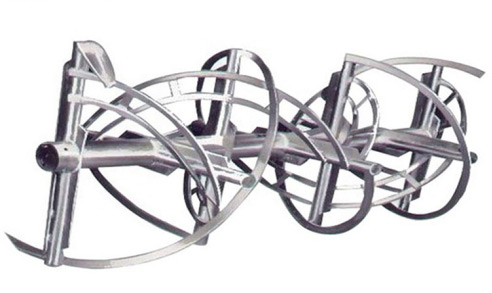咨詢熱線18915268821
Mixing form

Overview
The WLDH horizontal spiral belt mixer is composed of a U-shaped shell, spiral belt stirring blades, and transmission components; The spiral shaped blades have a double-layer internal and external structure, with the outer spiral collecting materials from both sides to the center, and the inner spiral conveying materials from the center to both sides, forming convective mixing. The horizontal spiral belt mixer has a good effect on the mixing of sticky or cohesive powder particles, as well as the mixing of liquid and paste materials added to the powder. The cylinder cover can be made into a fully open door for easy cleaning and product replacement of the equipment.
Product Features and Applications
WLDH horizontal screw belt mixer is a new type of high-efficiency mixing equipment that has introduced foreign technology and been digested and innovatively designed by our company's professional technical personnel. It is widely used in chemical, pharmaceutical, compound fertilizers, dyes, pigments, rubber, building materials, food, milk powder, health products, feed, additives, aquaculture, bioengineering, fine chemical, ceramics, refractory materials, rare earth, plastic glass, and new materials Mixing of solid and solid (i.e. powder and powder), solid and liquid (i.e. powder and slurry) materials in industries such as nuclear energy materials.
Specification parameters
1. Determine the volume of materials mixed in each batch, ranging from 0.1 to 20 cubic meters, and select equipment of corresponding specifications.
2. Select equipment to make materials, which can be divided into parts that come into contact with the material and parts that do not come into contact with the material. Other components of the equipment should maintain their original materials. The material is determined based on factors such as material properties, working conditions, and hygiene level. Generally, carbon steel and 304/316L/321 stainless steel materials are selected and the surface treatment requirements are determined according to the requirements.
3. Determine the driving capacity of the configuration based on the specific gravity, fluidity, and other properties of the material, as well as the startup standards. Starting standards include: heavy load starting and no-load starting.
4. According to the actual process situation, add auxiliary functional components such as spraying, heating/cooling, etc.
5. Design equipment opening requirements, such as feeding ports, cleaning ports, exhaust holes, etc
6. Select the discharge mode and driving method, including pneumatic, pneumatic, and electric
Important reminder: The selection of equipment is a crucial step, and detailed information on materials and process arrangements should be provided as much as possible, so that our company's professionals can provide you with high-quality technical services.
case diagram
